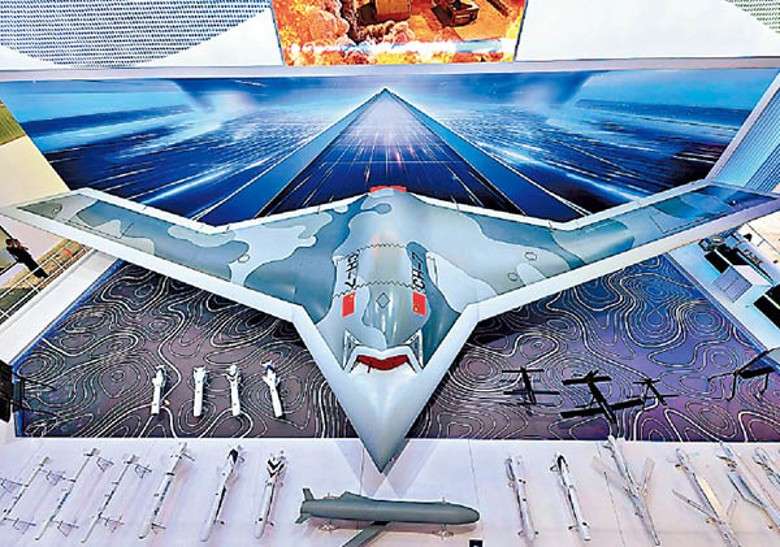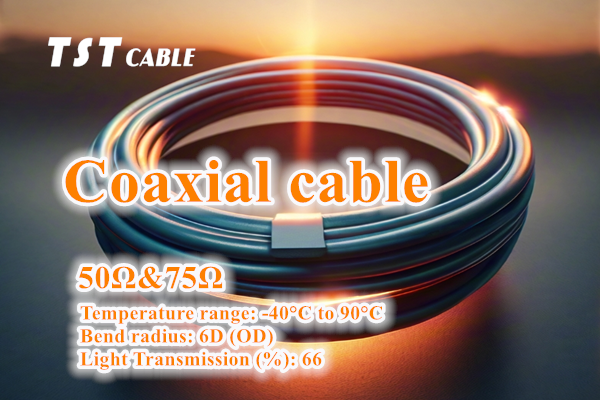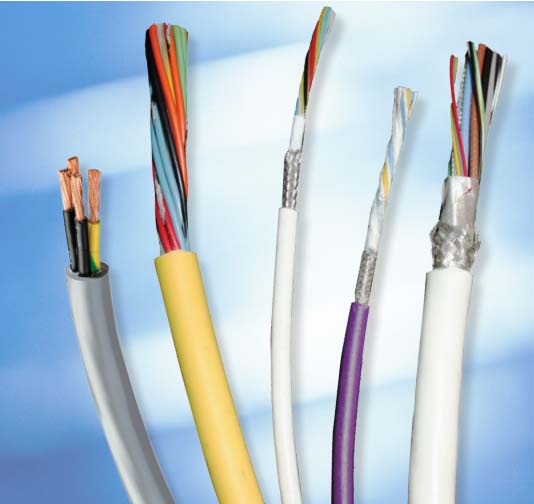Coaxial Cable is a type of wire and signal transmission line with a special structure and superior performance, which has a wide range of applications in many fields. The following is a detailed introduction to coaxial cable:
I. Structure of Coaxial Cable
Coaxial cable is generally composed of four layers of material:
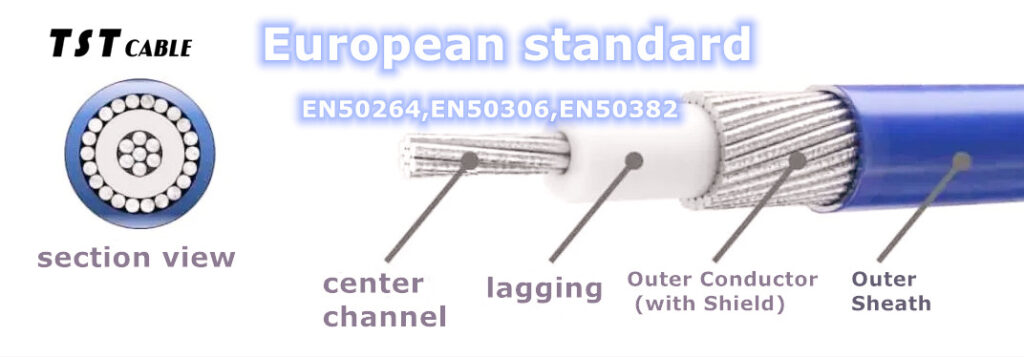
- Center conductor: usually a conductive copper wire, used to transmit signals.
- Insulation: the center conductor wrapped around the outside of a layer of plastic, mainly insulating effect, but also dielectric.
- Shield: outside the insulator is a thin layer of mesh conductor, usually made of copper or alloy, play a shielding and conductive role.
- External insulation: the outermost layer is insulating material as the outer skin, to protect the internal structure and prevent the external environment on the cable.
Second, the characteristics of high-quality coaxial cable
- Strong anti-interference ability: the structural design of coaxial cable makes it has good anti-interference ability. The center conductor is used to transmit signals, while the peripheral shielding network can effectively inhibit the interference of electromagnetic noise on the signal, providing clear signal transmission.
- Long transmission distance: the electric field distribution between the inner conductor and the shield of the coaxial cable is good, so the signal can be transmitted over a long distance with less attenuation, suitable for long distance signal transmission.
- Signal transmission stability: due to the excellent shielding effect of coaxial cable, the external electromagnetic interference on the signal has less impact, thus ensuring the stability of signal transmission.
- High bandwidth: The design and structure of coaxial cables support the transmission of higher frequency signals and therefore have a high bandwidth capability, suitable for high-speed data transmission and video transmission and other applications.
- High security: The shielding of coaxial cables prevents information leakage and ensures the security of information transmission.
- Wide range of applications: coaxial cable is widely used in many fields such as television, telephone, computer, Internet of Things, showing its good adaptability and versatility.
Third, the application of coaxial cable
Coaxial cable is widely used in many fields because of its good shielding performance, low attenuation and high-frequency response characteristics, especially in the need for high-quality signal transmission.
- Television broadcasting system: coaxial cable in the television broadcasting system plays an important role, it can be efficient and stable transmission of television signals, to ensure the clarity of the television picture and sound quality. In cable TV system, coaxial cable is used to transmit TV signals from TV stations or signal sources to users’ homes.
- Security Monitoring System: In the security field, coaxial cables are often used to transmit video and audio signals captured by cameras to ensure the clarity and real-time quality of the surveillance picture.
- Communication system: Coaxial cable is often used as a transmission medium in long and short distance communication, especially for transmitting high frequency signals. Due to its better shielding performance and low attenuation characteristics, it is suitable for microwave relay communications, satellite communications ground stations and the connection between the main system.
- Computer networks: Coaxial cables have also been used to build local area networks (LAN), especially in the early stages of the development of Ethernet technology. Although Ethernet now uses twisted pair or fiber optics more as a transmission medium, coaxial cables are still visible in certain specific applications or older networks.
- Aerospace and Military Applications: Due to its excellent shielding properties and transmission efficiency, coaxial cable is also widely used in aerospace and military applications to transmit a variety of critical signals.
- Industrial Measurement and Control: In industrial environments, coaxial cables are often used to connect a variety of sensors and measuring devices to ensure accurate data transmission.
- Medical Equipment: In the medical field, coaxial cables are used to connect a variety of medical equipment, such as ultrasound scanners, electrocardiographs, etc., to ensure the accurate transmission of medical data.
- Railroad Signal System: In the railroad system, coaxial cables are used to transmit signals and control information to ensure the safe operation of trains.
- Radar system: radar system needs to transmit high frequency signals efficiently and stably, coaxial cable is widely used because of its superior performance.
Fourth, high-quality coaxial cable materials used
High-quality coaxial cable in the material selection is very careful to ensure the stability of signal transmission, anti-interference ability and durability. Specific material selection may vary depending on application scenarios, performance requirements and cost considerations.
- Center Conductor: Oxygen-free copper or silver-plated copper is usually used as the center conductor. Oxygen-free copper is characterized by high mechanical strength, while silver-plated copper provides better electrical conductivity.
- Dielectric layer: Polytetrafluoroethylene (PTFE) is a commonly used dielectric material in high-quality coaxial cables.PTFE has the lowest dielectric constant and loss factor, and its dielectric and insulating properties are basically unaffected by changes in temperature, humidity and frequency. In addition, PTFE can be used in a wide range of temperatures, with a maximum temperature of 200°C. In addition to PTFE, materials such as foamed FEP are sometimes used as dielectric layers.
- Outer conductor: The outer conductor is usually made of copper or an alloy, and is braided or wrapped to form a thin mesh layer for shielding. In order to improve the performance, the outer conductor may use silver-plated copper tape braiding or silver-plated copper tape winding and other materials and technologies.
- Shield: The shield usually adopts a multi-layer structure, such as flat braided outer conductor + aluminum foil longitudinal wrapping + silver-plated copper wire braiding, etc., in order to improve the anti-interference ability and the stability of signal transmission.
- Outer sheath: As the outermost layer of the cable, the outer sheath mainly plays a protective role. Common materials are FEP, PUR, ETFE and PFA. These materials have good temperature resistance, corrosion resistance and wear resistance.
Fifth, the transmission mode of coaxial cable
Coaxial cable transmission methods mainly include baseband transmission and modulation transmission, respectively, for different application scenarios and needs.
- Baseband transmission:
- Baseband transmission refers to the bandwidth of the signal itself (such as video baseband width of 0 to 6MHz) directly through the cable transmission. This method is simple and direct, and is often used in short distance and small to medium-sized systems, such as TV monitoring systems. However, baseband transmission is susceptible to various kinds of interference.
- Modulated transmission:
- In order to better suppress interference in baseband transmission and to realize the transmission of multiple signals over a single cable, modulated transmission can be used. In this method, the video signal is modulated onto a high-frequency carrier and then transmitted over the cable. After reception at the terminal, the signal is then demodulated out. This method can transmit over longer distances and can realize the transmission of multiple signals, which improves the transmission efficiency and band utilization. Modulation transmission method is mostly found in the cable television system.
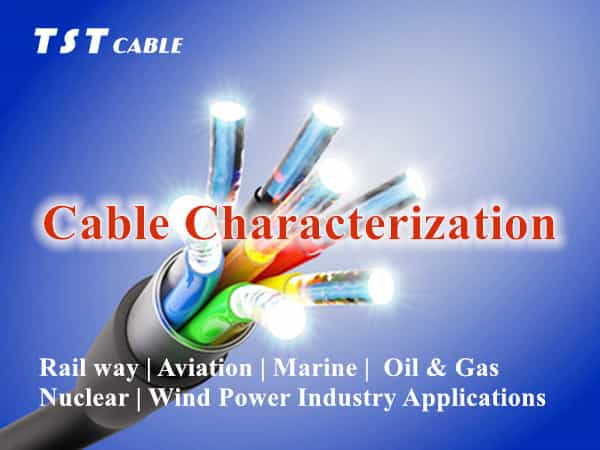
Six, the difference between high-quality coaxial cable and ordinary cable
Structural differences:
High-quality coaxial cable has a four-layer structure, including the center conductor (usually copper wire), insulation, mesh conductive layer (shielding layer, usually composed of copper or alloy) and the outermost layer of insulation material. This structure allows coaxial cables to have better shielding properties and higher transmission efficiency.
Ordinary cables, on the other hand, are usually composed of several wires or groups of wires, each insulated from each other, and do not have the same multi-layer structure as coaxial cables.
Transmission performance:
High-quality coaxial cable can efficiently transmit analog and digital signals with low attenuation, and is suitable for long-distance and high-quality signal transmission, such as cable television signals and broadband network signal transmission.
Ordinary cables are mainly used for transmitting electrical energy, and although they can also transmit signals, they are usually inferior to coaxial cables in terms of signal fidelity and long distance transmission.
Applications:
High-quality coaxial cables are widely used in television broadcasting systems, long-distance telephone transmission, connection between computer systems and local area networks.
Ordinary cables are mostly used in electric power systems, lighting, and connections between electrical equipment.
Impedance and signal transmission:
High-quality coaxial cables usually have a characteristic impedance of 50 Ω or 75 Ω, which is suitable for different signal transmission needs. 50 Ω coaxial cables are mostly used for digital signal transmission, while 75 Ω ones are mostly used for video signal transmission.
The impedance of ordinary cables varies according to their specific type and use, but is usually higher, about 1000-2000Ω, suitable for low-frequency transmission.
Anti-interference capability:
Due to the shield design of high quality coaxial cables, it has a strong anti-interference capability and can maintain signal stability in complex electromagnetic environments.
Ordinary cable in the anti-interference is relatively weak, easy to be affected by external electromagnetic interference.
Seven, high-quality coaxial cable suppliers A handful of manufacturers Global shipment After-sales worry-free – TSTCABLES (www.tstcables.com)
The world’s leading coaxial cable manufacturer TSTCABLES, coaxial cable products using high-quality metal conductors and precision shielding, anti-interference ability is super strong, to ensure that the signal loss transmission. The durable outer jacket protects the cable from damage and provides a longer service life. Whether it’s TV, Internet or communication, our coaxial cables allow you to enjoy high-definition, stable transmission, free communication without barriers! If you have questions and needs about coaxial cables, please feel free to send an email to communicate with us!
Also available in:
English


